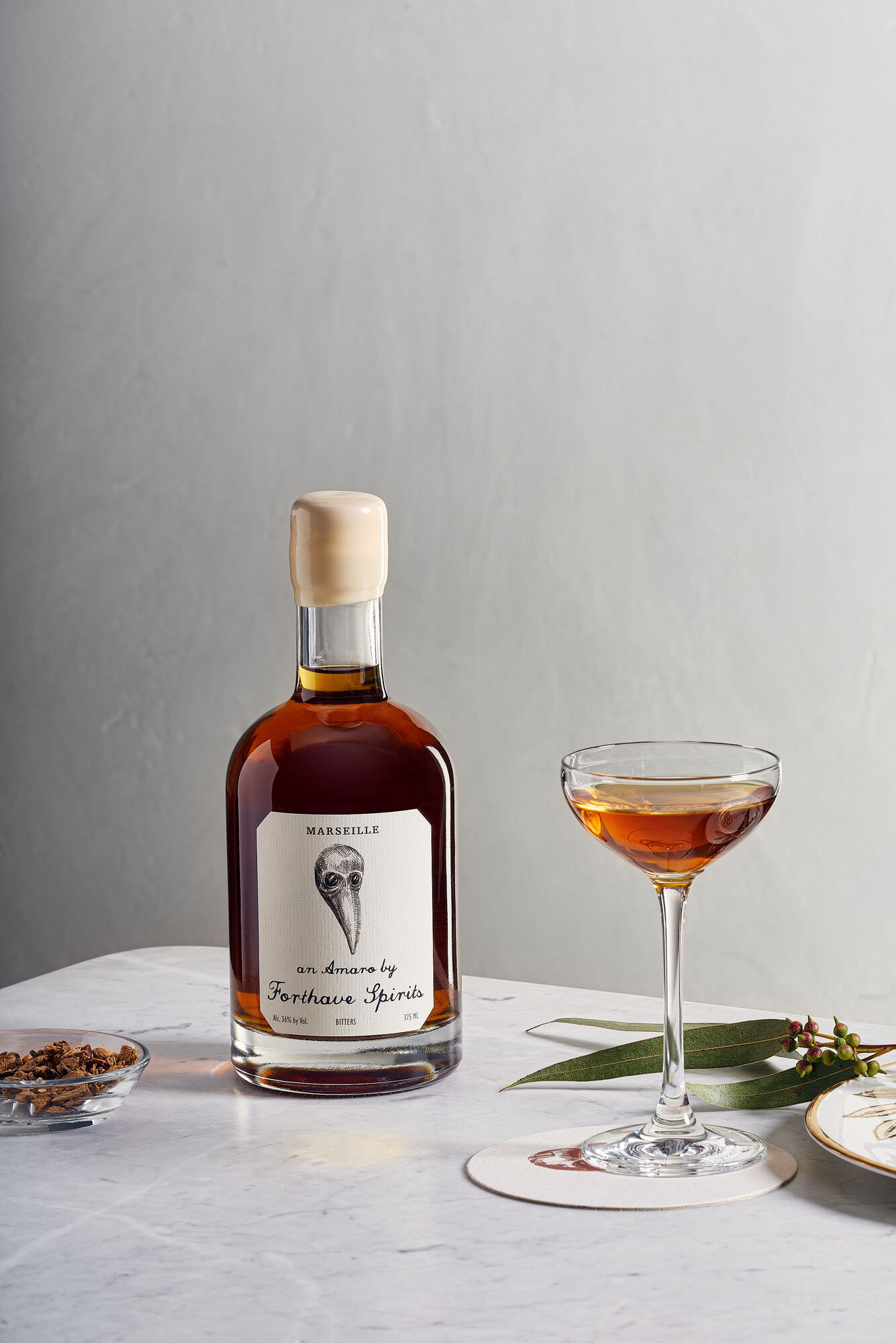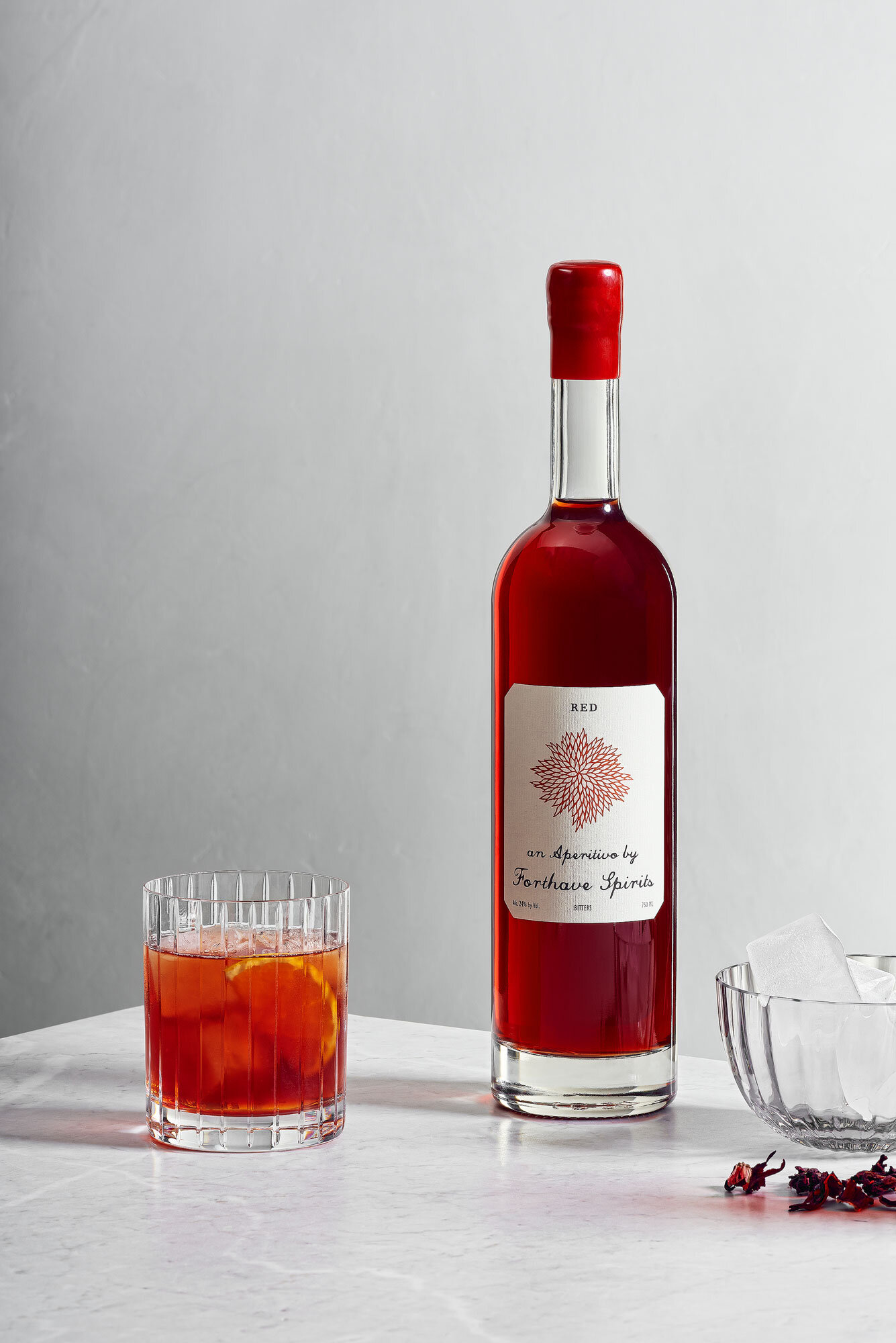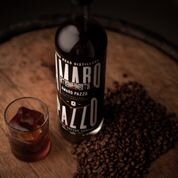The New American Amari: Four to Try
How American amaro makers are putting their own spin on the classic liqueur.
Marseille by Forthave Spirits courtesy Forthave spirits
What do Illinois arugula, New York State honey and Michigan roasted coffee have in common? American distillers are using them to make their version of a classic spirit.
There’s no doubt that amaro, once the province of monasteries and mountain towns in Italy, has established itself in distilleries from Bedford-Stuyvesant in Brooklyn to Grand Rapids, Michigan. American producers are focusing on small-batch products that are inspired by their European predecessors but are being made with new processes and distinctive recipes for a new twist on the bittersweet liqueur, amaro.
Before the coronavirus pandemic, you could find a growing list of American amari at restaurants and bars. Now that the hospitality business has changed, wine and liquor stores are an essential source for the newest wave.
“American amari are gaining in popularity as consumers are interested in unique offerings made by craft distillers,” said Sother Teague of the bar Amor y Amargo, which has two locations in New York City—in the East Village in Manhattan and Williamsburg. The bars specialize in amari and bitters, and Teague is also the author of I’m Just Here for the Drinks: A Guide to Spirits, Drinking and More Than 100 Extraordinary Cocktails. “Amari are inherently terroir-driven, so each offering is a glimpse into the region from which it originates.”
In Charleston, South Carolina, High Wire Distilling makes its Southern Amaro with local yaupon holly and Dancy tangerines. Breckenridge Bitters, from Breckenridge Distillery in Colorado, uses locally sourced alpine herbs.
And in Brooklyn, Forthave (pronounced “four-thave” and named for the 15th century botanist Richard Forthave) Spirits, owned by Daniel de la Nuez, a former film and TV producer, and Aaron Fox, formerly of Walden, a farm-to-table restaurant in the Williamsburg neighborhood, are concocting a traditional amaro with notes of eucalyptus and honey called “Marseille.” (They also produce “Red,” an aperitivo made with 13 different botanicals, and a gin that they call “Blue.” The simplicity of the names belies the complex spirits that earned them a 2020 James Beard nomination for “Best Wine, Spirit or Beer Producer.” )
Where the bitter trail begins: Forthave Spirits
By using entirely organic ingredients, the founders are focused on putting their own twist on the traditional spirits. They got their start after Mr. Fox started serving D.I.Y. versions at Walden. “I did the beverage part of the restaurant,” he said. “I was making those very homemade little styles of spirits, a little glass to give out with the check and to friends. It was a total passion product. As Daniel and I became friends, we bonded over wine and spirits and this aperitivo and amaro stuff dovetailed with that.”
Mr. de la Nuez would collect vintage bottles of amari on his trips to Italy and Spain and was intrigued by the beverage's history as an herbal medicine. “Monks would create these as cure-alls and we have bottles from the late 1940s that would be sold in an apothecary,” he said. “They were labeled for medicinal use. The idea was to get closer to what they used to be. In the 1960s there was a shift to artificial colors and flavorings. We set out to bring it back to how it started.”
They use only plant-based, raw products that are pesticide-free, with ingredients coming from all over the world including genepi (the wormwood plant) from the Italian Alps, cinchona bark from Peru, rose buds from Morocco and honey from Ithaca, New York. “We come up with probably 10 finished spirits for every one that we come out with, and for every 10 we come up with we’ve gone through a lot of different pieces.” The finished amari are infusions with different botanicals that all have different ABVs, with a layering process that allows the notes from each ingredient to come through.
Red by Forthave Spirits courtesy Forthave Spirits
Amaro in the Covid age
Before the Covid-19 led to lockdowns, Forthave was beginning to be featured in a number of restaurants and Mr. de la Nuez and Mr. Fox say they hope to be there when things regain some semblance of normalcy.
“The natural wine scene, which is nascent, embraced us pretty quickly because of how we make things,” Mr. de la Nuez said. Mr. Fox pointed out that spirits were starting to follow broader food and restaurant trends before the pandemic hit: “Ingredients became more particular in terms of the way they are grown and produced and then their wine and beer programs started to move that way. The last tail of that is for the back bar, the spirit program with the stuff they’re making those beautiful cocktails out of, to be ingredient-driven too. That is where we come in.”
The Forthave founders say the best way to enjoy their aperitivo is with seltzer or sparkling wine while cooking or getting ready for a meal because it won’t knock you over. For their amaro, Mr. Foxs said, “There is no better drink at the end of the day while reading a book before bed; it is very calming.”
Windy City amaro: Cinpatrazzo
Cinpatrazzo in Chicago makes its amaro, which won a silver medal in the 2018 NY International Spirits Competition, using ingredients and methods inspired by a trip to the Puglia region of Italy, where Pat Magner, a co-founder, fell in love with amaro as a college student in the 1970s. In addition to the flavor, he was taken with the digestive properties of amaro after a meal of bread and pasta.
He and his partner, and co-founder, Cindy Tegtmeyer, decided to create their own version after meeting each other in 2012. They formed their company, Beppe and the Architect, in 2014 and have been using mostly organic herbs and plants in their spirit ever since. “We think that as American amari continue to be created, the trend will likely lead to more ‘locally sourced’ amari that are representative of their place of origin,” said Mr. Magner, echoing what Sother Teague of Amor y Amargo believes. They use arugula, sage and mint that are grown locally—and hydroponically. The honey is from a farm in nearby Michigan, and the locality of the ingredients gives the amaro a unique taste. I found the first notes to be slightly sweet in a pleasant way with some vanilla notes and a finish that features the flavor of bitter orange peel but not in an overpowering way. If you like black licorice (and I do) you will like this amaro.
While Mr. Magner said he enjoys Cinpatrazzo straight up, Ms. Tegtmeyer likes to drink it in a range of cocktails. One of her favorites is Fibonnachi’s Forest, created by the Chicago bartender Aaron Pollack and which features their amaro, gin, single malt Scotch, cedar-infused vermouth and peppercorn-infused honey.
Meanwhile, in the nation’s capital: Don Ciccio
Francesco Amodeo, the owner of Don Ciccio and Figli, is reinventing his family business in Washington, D.C., and giving drinkers an updated version of amaro and other liqueurs from a limoncello to the artichoke liqueur called C3 Carciofo. His family started a spirits business on the Amalfi coast in 1883, and made about 45 different alcoholic products over the years until a major earthquake brought the distillery to an end in 1980.
In 2012, three decades later, Don Ciccio, named for Mr. Amodeo’s grandfather, started producing three different categories of spirits: aperitivi, amari and cordials. Originally the family’s “Cinque” aperitivo had five botanicals but Mr. Amodeo added seven more to make it a better fit for modern consumers. “It has a little more strength, and is more floral and interesting,” he said of the 21st century version.
Don Ciccio is producing many liqueurs—and three classic amari. “The Serene is made of 30 roots and herbs and is the most sweet of the three amari, because we want the barrel to decrease the bitterness through aging, and we use more sugar to bring the proof down. Doing that makes for a more mellow flavor profile,” Mr. Amodeo said. “The Ferro Kina has a lot of bitter lemon which naturally boosts the bitterness, and it ages for six months, so it is a little bit more iron-y, and was made to fight anemia back in the day. The fernet brings a lot of bitterness, mint, ginger, saffron and three different kinds of chocolate, though it has the least amount of sugar (and is the most bitter).” Many of the ingredients are local, Mr. Amodeo said, but they are proprietary—something of an amaro tradition.
“In 2014 people were asking, ‘What is amaro?’ and we had to educate a lot,” he said. “After 2016 people seemed to be comfortable and acquainted with the category. Now we get asked all the time when we’re coming up with something new.”
The Long Road looks ahead: Amaro Pazzo
In Grand Rapids, Long Road Distillers is making an amaro with their neighbor, the nationally acclaimed roaster Madcap Coffee.
Long Road makes a long list of spirits (including bourbon, gin, aquavit and Michigan cherry liqueur). “The idea for an amaro really came out of a desire to partner with Madcap Coffee, who we consider to be one of the best coffee roasters in the country,” said Kyle VanStrien, Long Road’s co-owner. “Being good friends with them for five or six years, we’ve always wanted to come up with a product with them. Early on we discussed coffee liqueurs, but with the understanding that we didn’t want to make a basic coffee liqueur with vanilla flavor and sugar.
“We wanted to produce an amaro and Trevor [Corlett], an owner at Madcap, considers amaro his favorite category, so it made a lot of sense.”
Mr. VanStrien said the collaboration amaro—called Amaro Pazzo (which means “crazy bitter”), lives up to its name and also has citrus flavors; the coffee brings a nice acidity. He said he enjoys Long Road’s amaro as a shot before dinner, or as an end-of-the-night drink, and also mixed with their gin or in a cocktail like the “Espress Yourself,” which includes, orange bitters, lemon, orange and espresso and is served at the Long Road taproom.
Can the amaro trend last without a thriving bar culture?
The drinks historian David Wondrich, whose books include Punch and Imbibe, is an amari admirer. “I do like amari neat after a heavy meal,” he said in an email. “I also like them in cocktails: 50-50 amaro and rye stirred with ice and strained into a cocktail glass with a twist makes a simple, strong and tasty drink.”
Mr. Wondrich said he is excited about American amari but also has some concerns about the impact of the coronavirus on experimentation with different spirits at home.
“I do think Americans are getting more into amari, and a great many have been persuaded to try them in cocktails,” he said, “although I suspect that with Covid-19 and the return to home mixology amari will be less visible than they were. Once you have to buy every bottle, it gets harder to justify having four or five different amari. I hope I'm wrong.”
I’m lucky enough to have a few of these American amari in my possession and I’ve enjoyed sampling and savoring them all. After a big meal or a busy time with my 10-week-old son, I like to end the day with a pour of one of them. It could be the power of suggestion, but I find they really do calm my stomach and they work well as a bittersweet dessert on a summer day—and I’m looking forward to mixing them in cocktails and sharing them with friends into fall and winter.




